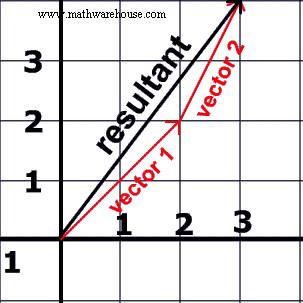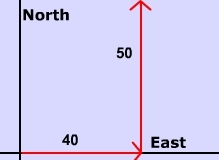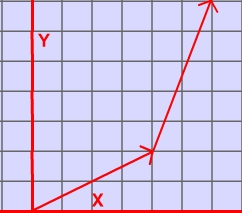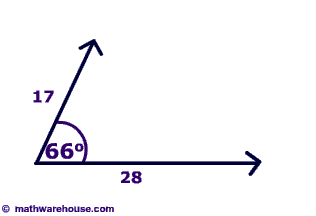Head to Tail Method
The head to tail method is way to find the resultant vector. The steps are quite straight forward. The head to tail method considers the head of a vector to be the end with the arrow, or the 'pointy end'. The tail of the vector is where the vector begins.
- Place the two vectors next to each other such that the head of the one vector is touching the tail of the other vector.
- Draw the resultant vector by starting where the tail of first vector is to the head of second vector.




















